Varieties of plectrantus

Plectrantus is an unusual plant that is often grown at home. The flower is also called home or indoor mint. It is highly regarded for its attractive appearance and pleasant aroma.
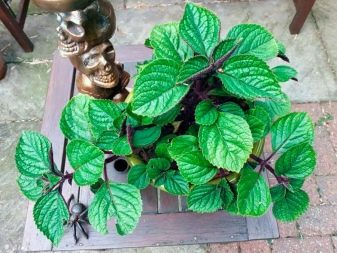
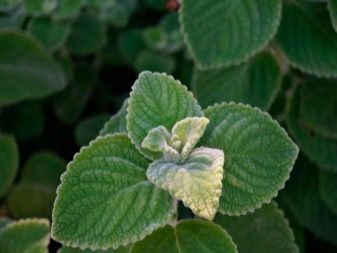
Botanical description
Plectrantus is small in size. Most often it is planted in small pots or hanging planters. You can grow it both in the room and on the street. The main thing is to keep it away from heating appliances.
Compact bushes are covered with carved leaves. Their edges are serrated, and the color is pale green. In some cases, a neat pattern is visible on the surface of the foliage. Plectrantus leaves have a pleasant mint smell. Fresh and dried foliage is often used to prepare various teas and infusions.
The flowers that appear on the bushes are miniature in size. They can be white, blue or lilac. This plant usually blooms in early spring.
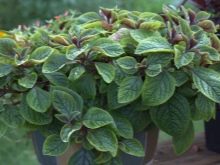
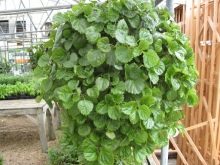
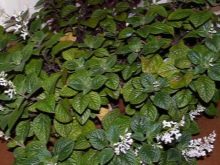
Types and varieties
There are now many varieties of roommint. They all have their own distinctive features.
Ampelny
It is a large plant with bulky leaves. Their color is dark green, but there is a white border around the edges. Mature shrubs look very beautiful. Most often they are grown on the balcony.
In this case, with their mint aroma, they scare away mosquitoes and other insects.
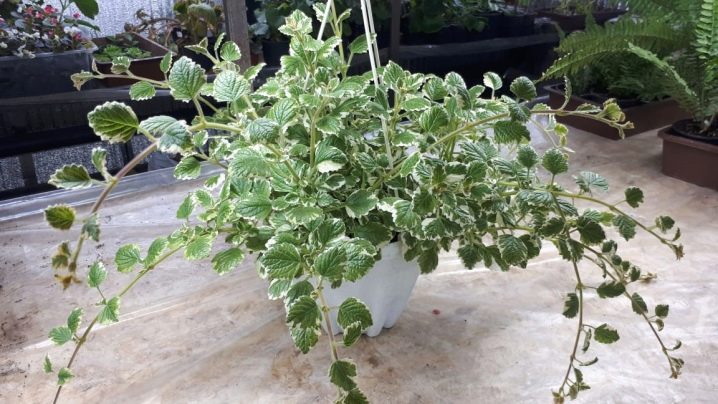
Coleus
This subspecies has large foliage. Her edging is also light. In some cases, small specks or streaks are visible. The plant has a pleasant and delicate aroma. Its stems are fleecy, their shade is pink-red.
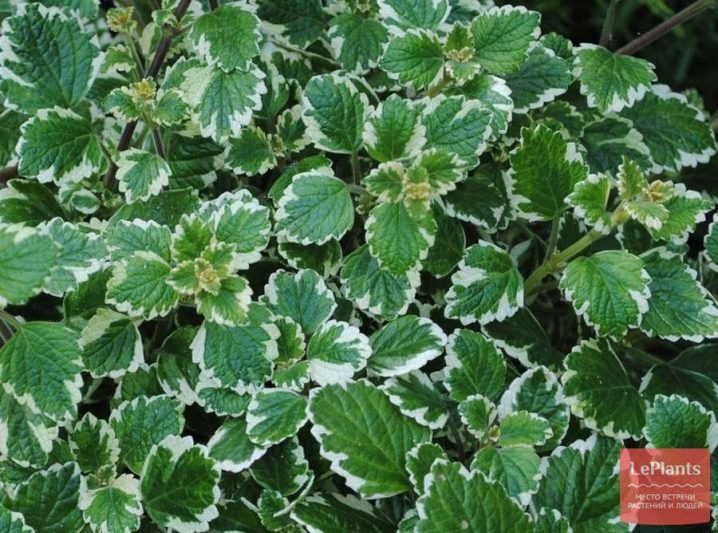
Shrub
This type of plant is larger in size. In the wild, it is found only in hot African countries. The stem of the flower is pubescent, and the foliage is wide. Its surface is wrinkled. In the period from late winter to early summer, the shrub plant blooms. His flowers are light blue.
The culture is often referred to as the molar tree. This is due to the fact that the smell of its foliage scares away moths. Therefore, it is very profitable to grow such a plectrantus at home.
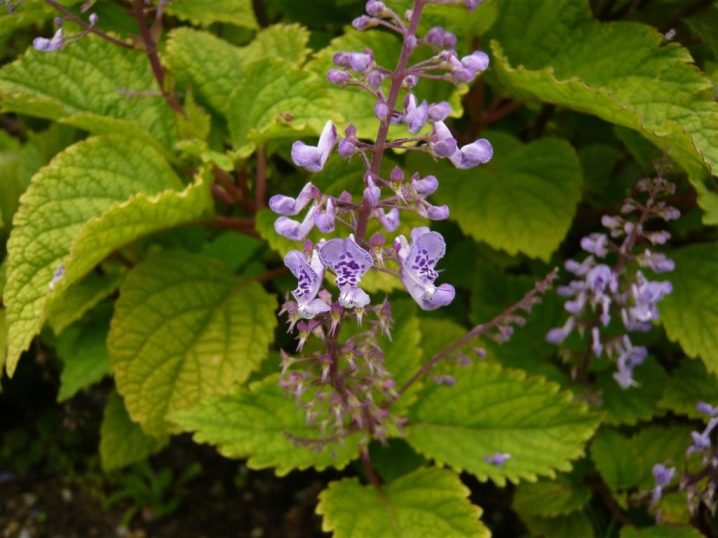
Whorled
The semi-shrub plant grows to a height of 60–140 centimeters. Its stems are colored dark red. The foliage is elongated, with rounded edges. The shade of the leaves is bright green. Their front side can be pubescent. In spring, a small bush is covered with small flowers of a light pink hue.
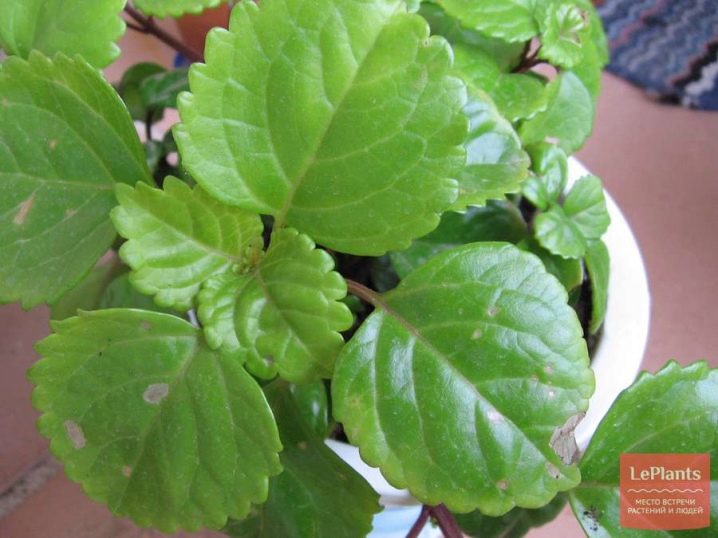
Dubolistny
This plant has erect stems. Its foliage is leathery. Its appearance resembles oak leaves. It is because of this that the plant got its name. The foliage smells strongly of needles. The flowers of this species of plectrantus are pale blue.
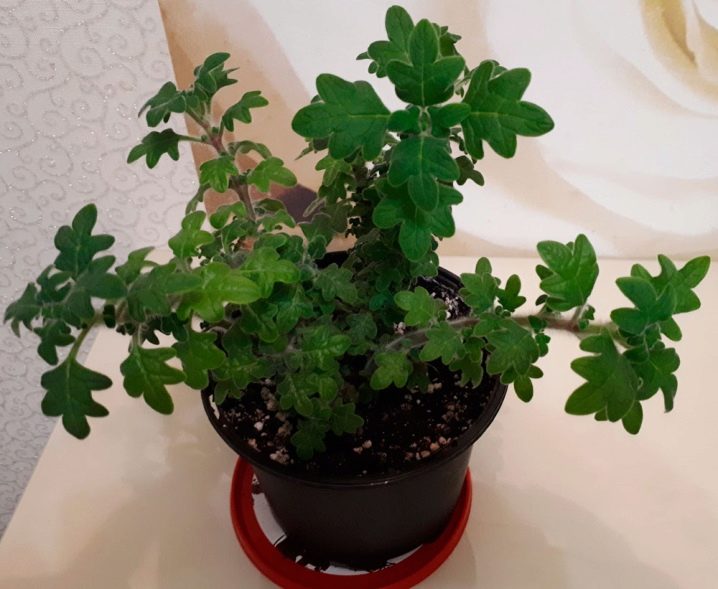
Southern
This plant is also called Scandinavian ivy. Its foliage is very bright. Its surface appears to be covered with a waxy coating. The edges of the sheets are serrated. The stems of this plant hang down. For this reason, plants are usually planted in pots.

Felt
This variety of plectrantus has large, fleshy leaves. They, like the stems of a flower, have a slight pubescence. The flowers of this plant are small and purple. They are pretty heavy. Therefore, when the plant blooms, the shoots begin to descend.
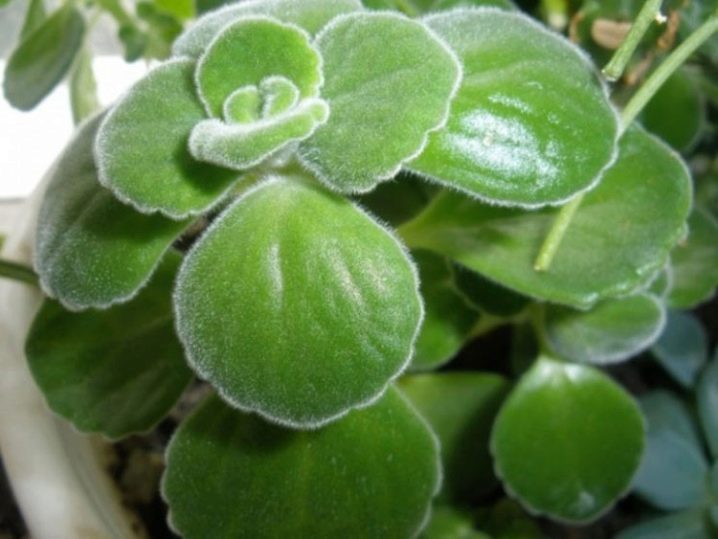
Blushing
It is a perennial plant with gradually lignified lower part of the stem. The height of an adult bush is 30-40 centimeters. Its foliage is fleshy, with sharp tops. Leaf petioles are short. Leaves and stems have a rich, pleasant aroma.
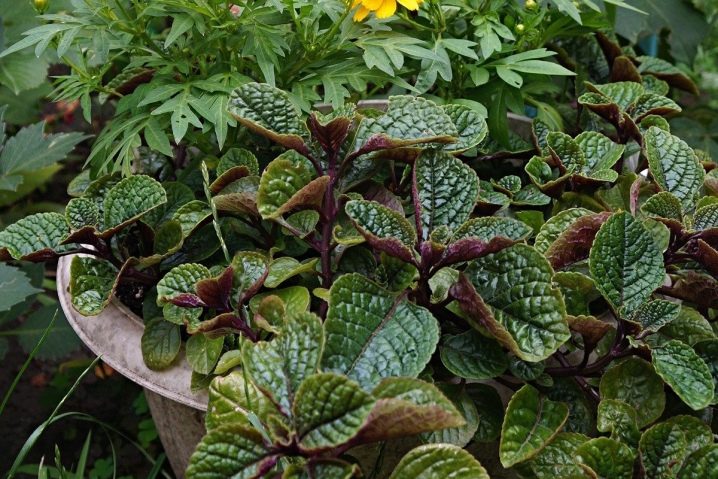
Variegated
This plant is also called Froster's or Golden ruffles. The flower has a heart-shaped foliage. The plant is absolutely unpretentious and grows very quickly. This type of flower belongs to horizontal plectranthus. Shoots can be up to 60 centimeters long.
Golden Raffles is suitable for decorating both balconies and flower beds.
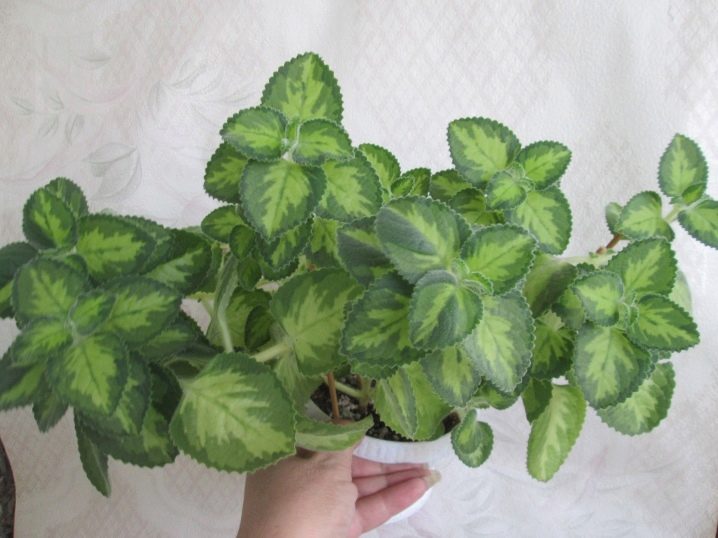
Amboinsky
The evergreen shrub is also often called Cuban oregano. Its foliage is light. There are small denticles along the edges. The surface is covered with short and very light fluff.
Amboinsky plectrantus can be used to prepare drinks and various dishes.

Caudexny
This plant looks like a small single-stemmed tree. Its top is abundantly covered with foliage and shoots. This variety of roommint is often used for interior decoration.
Many novice gardeners love her because she can go without water for a long time. Therefore, it is very easy to care for her.
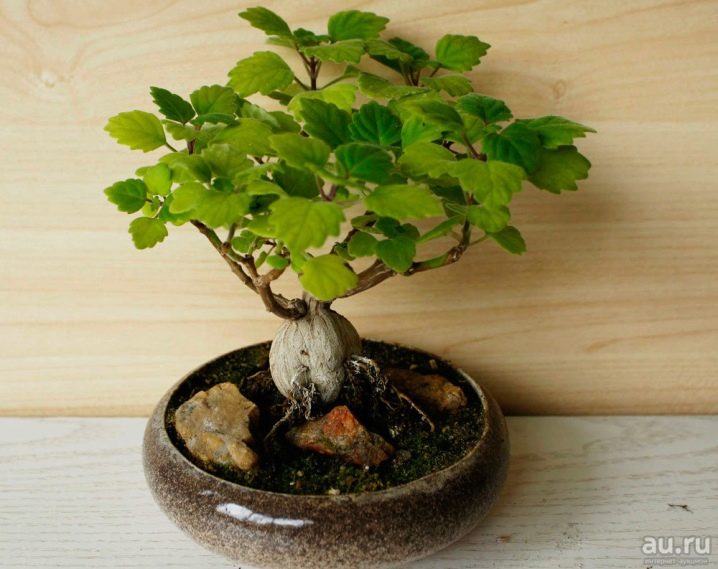
Schlemnikovidny
A large plant may well grow up to one and a half meters in height. Its stems are erect. Their surface can be either smooth or slightly pubescent. The foliage of such a plant has an oval shape. Colored veins are visible on its surface. The color of the flowers is blue, lilac or purple.

Ciliated
The average height of such a shrub is 70–80 centimeters. Its stem grows woody over time. The branches of the mint tree are lowered and covered with fleshy light green foliage. A short pile can be seen on the trunks and sheets. Flowers that appear on the bush in spring are purple in color. They can grow both singly and in groups.
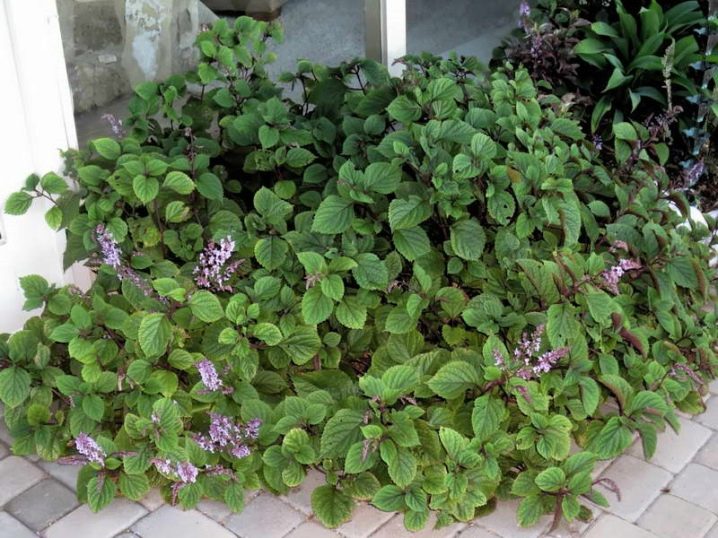
Mona lavender
This flower is often called "indoor lilac". The shrub is hybrid. It has brownish-brown stems and oval jagged edges near the foliage. The flowers of this plant resemble lavender. They are bluish purple with blue dots on the petals.

Ernst's Sparrow
It is a herbaceous plant with velvety emerald leaves. Such a flower looks great in the interior of most houses and apartments. In the spring, it is covered with bluish flowers. At this time, he looks very beautiful.
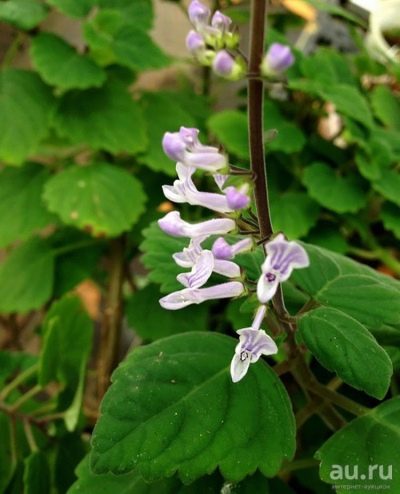
Ertendahl
This variety of roommint is small in size. Her foliage is greenish-brown. It is covered with red down on the seamy side, so it seems velvet. The flowers of this plant species are white.
When choosing an exotic flower to decorate your home, a florist should pay attention to such varieties as "Uwongo" and "Limelight". The first foliage has a pleasant golden color. The leaves of the second are covered with beautiful silvery spots.
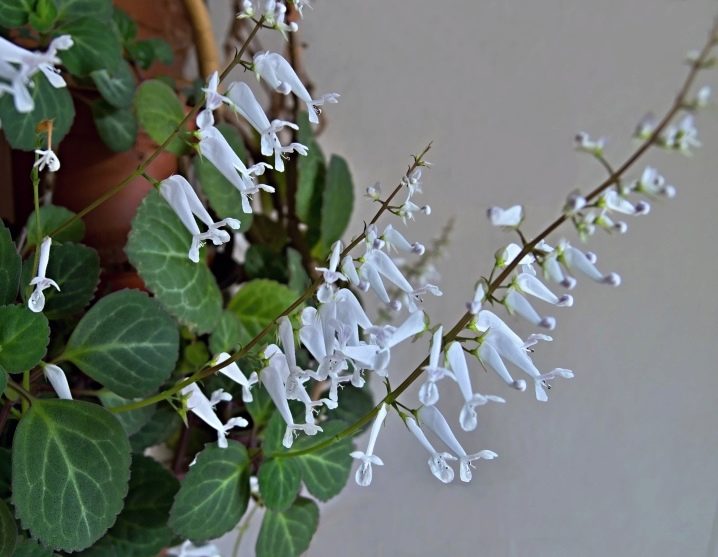
Variegated
This is another very beautiful hybrid with golden foliage. The variety with the romantic name "Troy Gold" looks impressive and can be grown both in the house and in the flower bed. The flower retains its attractiveness throughout the entire period of its life.
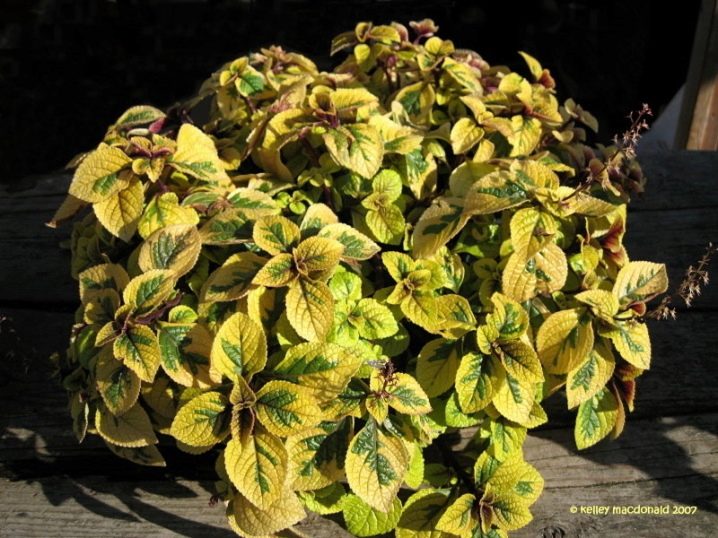
Other
There are other, less common types of plectranthus. One of them is Nico. The seamy side of the leaves of these plants is purple in color.
Such flowers are less resistant to drought, so more attention should be paid to caring for them.
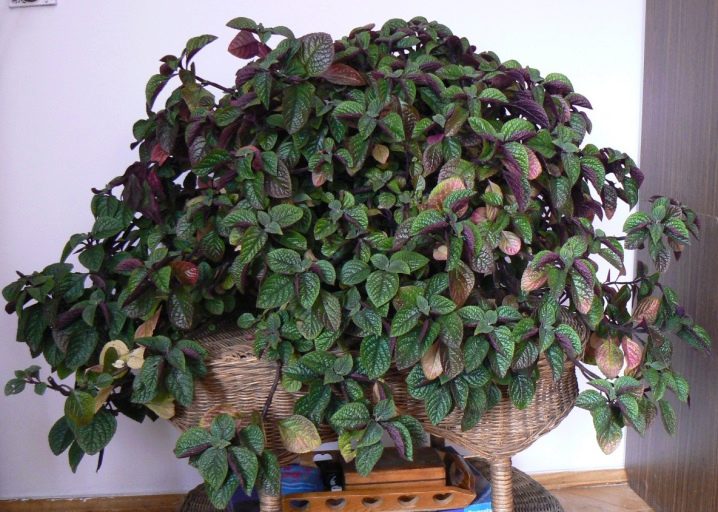
Care and cultivation
It is quite simple to care for a plectrantus growing at home. Immediately after purchase, the plant must be transplanted. A large container is chosen for this. There should be enough room for the flower's large root system. It is very important that there is a drainage hole at the bottom of the pot. The soil for transplanting must be chosen loose and nutritious.
You can put the flower on a windowsill or any other surface. The main thing is that the plant receives enough light.
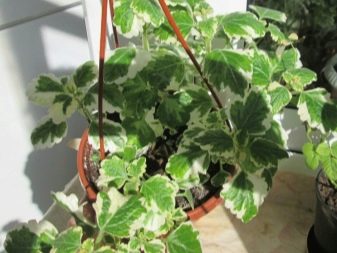
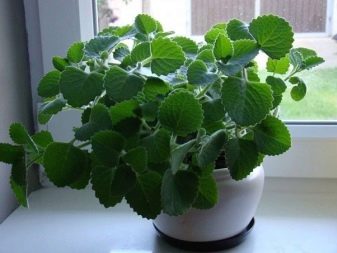
In the future, flower care includes the following procedures.
Pruning
Timely pruning helps to make the shrub look neat and beautiful. In the process, old, wilted or damaged stems are cut off. This allows the bush to rejuvenate.It is worth pruning the plant at the end of winter. Do not cut off too many of the shoots from the plants. Thus, the florist will only harm him.
The trimmed parts of the plant do not have to be thrown away. They can be used to prepare drinks or meals. The main thing is to make sure that this shoot is healthy.
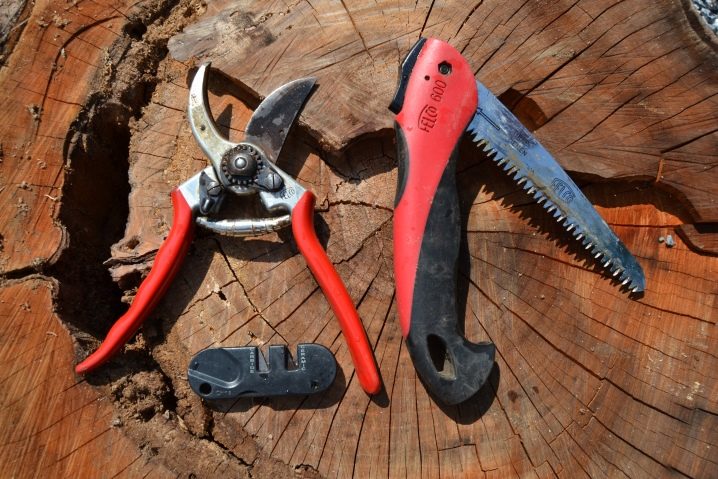
Watering
Since the foliage of most plectranthus is terry, it is not recommended to spray the flowers from a spray bottle. This can lead to the appearance of brown spots on their surface. Therefore, plants can only be watered at the root. Water for this purpose is used warm and soft. In the cold season, watering is carried out less often.
At the same time, it is still important to monitor the condition of the plants and prevent the soil from drying out.

Top dressing
Complex fertilizers are usually used to feed flowers. It is best to choose a universal composition for indoor flowers. In winter, the plants are not enriched. This can negatively affect the condition of the plant. In the warm season, fertilize once every 2-3 weeks. Regular feeding is good for the appearance of the bush.
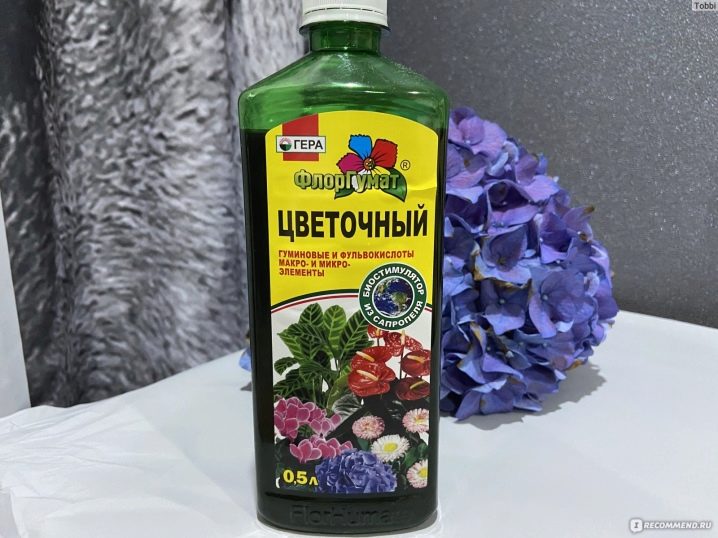
Transfer
Flowers are transplanted every 2-3 years. Any fortified soil is used as a substrate. The flower is taken out of the container along with the soil in which it grew. This is necessary in order not to damage the rhizome.
Plectrantus is usually transplanted in the spring. Immediately after transplanting, the plants are watered.
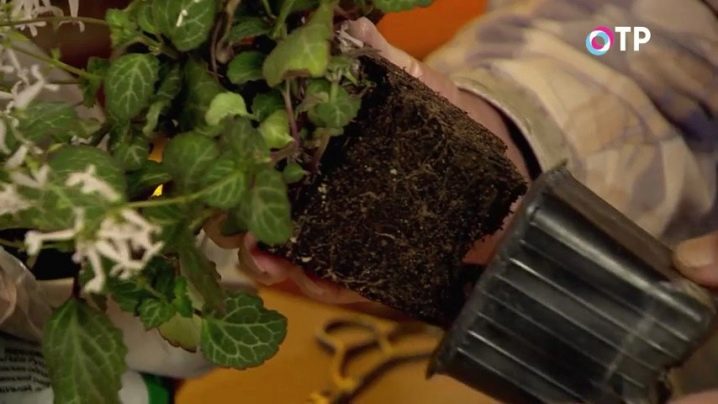
Reproduction
Indoor mint can be propagated in several ways. The most effective of these is cuttings. Shoots about 10 centimeters long are cut from an adult plant. Sections are treated with "Kornevin" or any similar preparations. After that, the cutting is placed in a moist substrate. If done correctly, the plant will take root in just two weeks. Immediately after that, it can be transplanted into a new pot.
An adult flower can be propagated by dividing the bush. But this must be done carefully, trying not to damage the root system. Sections on separate parts are treated with ash. After that, the new plants are placed in pots and covered with nutritious soil. Transplanted bushes are also watered immediately. They take root in a new place very quickly.
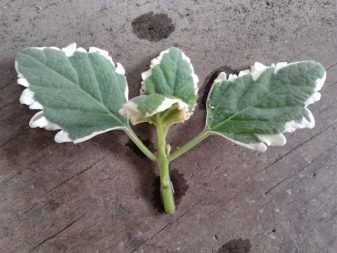

Pest control
The rich mint aroma of the flower quickly repels pests. Therefore, insects almost never attack him. They affect the bush only if the person does not pay enough attention to caring for the plants. If insects do appear on the flower, the bush should be treated with any proven insecticide.
Spraying should be done outdoors.

Disease protection
Powdery mildew affects this indoor flower most often. This happens in the case of too much watering. To cope with this problem, fungicides are used. Watering should be stopped for a while.
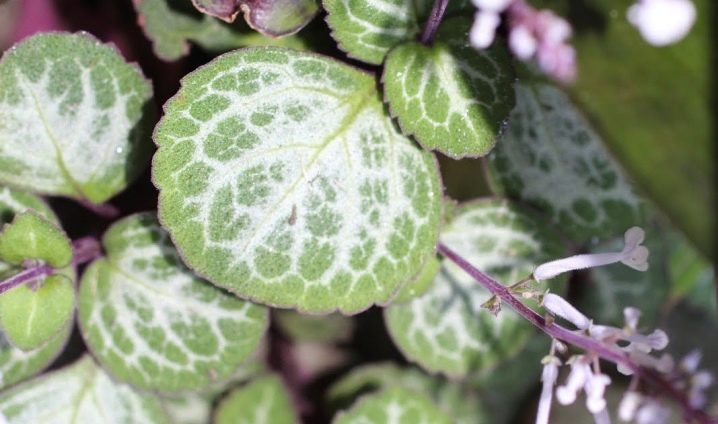
Wintering
If the plectrantus is grown in a flower bed or an open balcony, it must be transferred to the room for the winter. This is done after the temperature has dropped below 10 degrees. In the cold season, the plant should be kept in a cool room. If white marks appear on the foliage, the pot is moved to a brighter place. The same is done if the leaves of the plant are stretched.
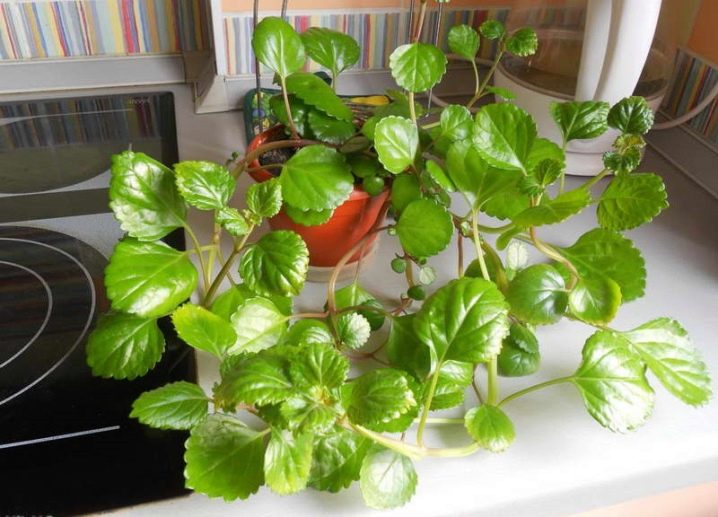
If you properly care for the purchased plant, it can live for more than five years.
The foliage and inflorescences of an adult flower can be used in cooking or for making decoctions. Infusions with them are made very simply: the leaves are poured with boiling water, left to infuse for half an hour, and then they are strained and consumed. This product is an excellent natural sleeping pill. But before using such a composition, a person needs to make sure that he does not have allergies.
In cooking, aromatic green leaves are usually used to decorate dishes or prepare all kinds of cocktails. In addition, they are added to jars when preserving peppers, cucumbers and other vegetables.

Summing up, we can say that plectrantus is not only a beautiful, but also quite useful plant.













The comment was sent successfully.